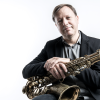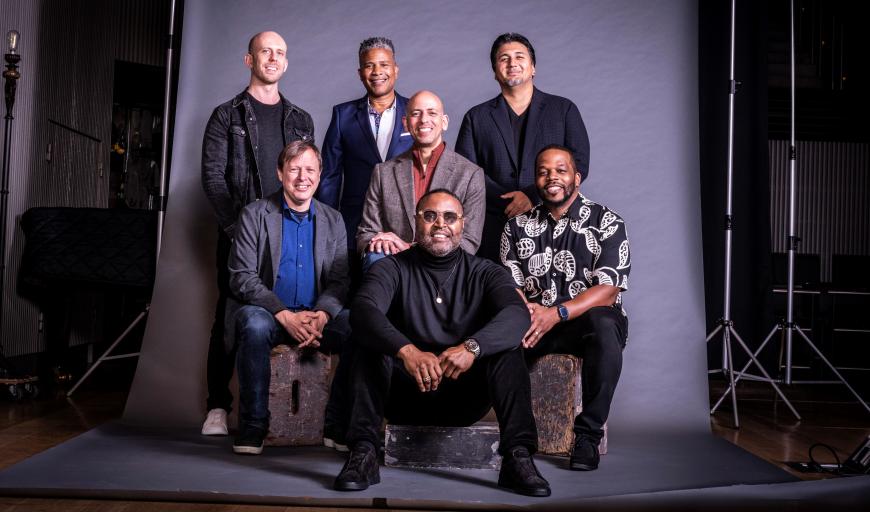
As musical experiments go, the SFJAZZ Collective keeps delivering exhilarating results.
The formula might seem like a no-brainer. Assemble a combo of A-list players, commission them to write and arrange new material, and provide the group with time and resources to rehearse the music before bringing it to the stage. But ever since introducing the ensemble in 2004 as an octet (or nonet if you count arranger Gil Goldstein), SFJAZZ has tinkered with various elements, starting with 86-ing the role of a house arranger. The Collective’s latest iteration, which makes its debut with a four-night run in Miner Auditorium Oct. 27–30, has evolved considerably since just 2021.
Four musicians from last season are gone. Most conspicuously, the Collective is once again an instrumental ensemble after hiring San Francisco vocalist Martin Luther McCoy in 2019 for a 50th-anniversary celebration of Sly & the Family Stone’s Stand. Still in the fold when the group returned to action last year after the pandemic hiatus, he was joined by vocalist Gretchen Parlato, who expanded the band to nine pieces. Adam Rogers, the Collective’s first guitarist, has also moved on now. He came on board for the Sly Stone and Miles Davis In a Silent Way anniversaries and stayed for last season’s politically engaged theme, “New Works Reflecting the Moment.”
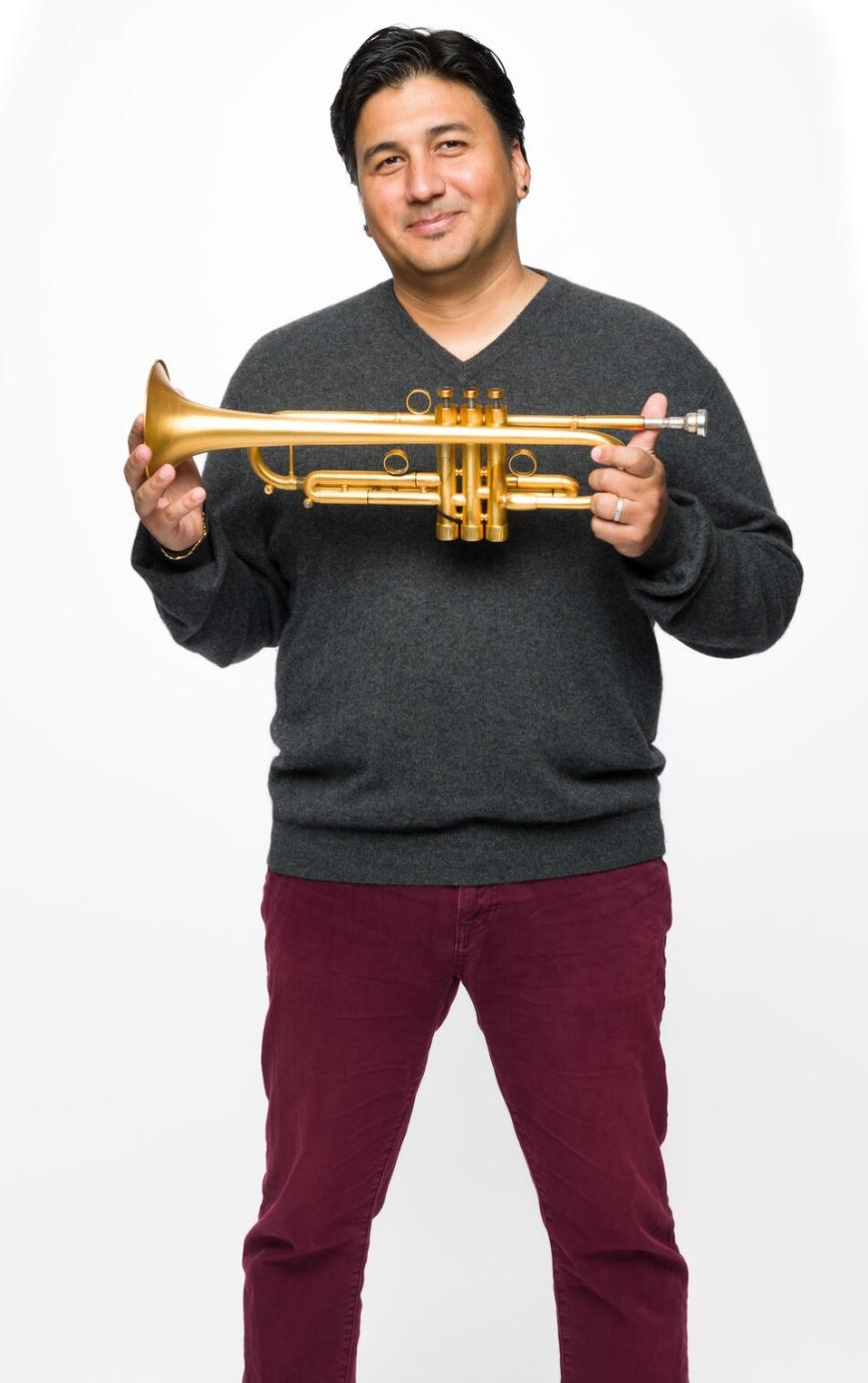
At seven pieces, this is the smallest version of the ensemble yet, but the changes aren’t all about subtraction. With the premiere of a major commission for the opening of the $550 million redesign of Lincoln Center’s rechristened David Geffen Hall, trumpeter Etienne Charles had to give up his Collective spot. Inaugurated by Nicholas Payton, it’s a chair that has showcased a brilliant cross section of trumpet talent, including Dave Douglas, Avishai Cohen, and Sean Jones. Michael Rodriguez is stepping into their big shoes, and while he’s never performed in the Bay Area as a leader, he’s made a vivid impression over the past two decades with Charlie Haden’s Liberation Music Orchestra, the Kenny Barron Quintet, Gonzalo Rubalcaba, and Yosvany Terry.
“For me, it’s an honor to be part of that lineage, and I’m just trying to honor that chair the best that I can,” said Rodriguez, 43, who joined the brass faculty of the San Francisco Conservatory of Music’s Roots, Jazz, and American Music program in 2018. “I’m friends with all of those guys. I’ve always known about the Collective, the majority of the players who have been in it are friends, and I’ve always been intrigued. Everyone is contributing, writing, and arranging. When I got the call this time, it was a no-brainer. I’d love to explore writing for this format, trying to write on the level that these guys are writing at. I treat it as a platform to learn and get better.”
He joins drummer Kendrick Scott (who came on board last year), bassist Matt Brewer, tenor saxophonist David Sánchez, vibraphonist Warren Wolf, and pianist Edward Simon, who’s tenure since 2010 makes him the Collective’s longest-serving member. Like last season, saxophonist Chris Potter is the nominal music director, though the ensemble’s very particular — well, collective — structure means that his responsibilities are often extramusical.
“When I came on as music director, I was wondering what that even means,” Potter said. “Everyone writes for it and brings in their own tunes, and for each tune they’re in charge of the group for that piece. But there are cases when somebody has to make a decision. Also, I can go between SFJAZZ and the musicians. I can say things on everybody’s behalf.”
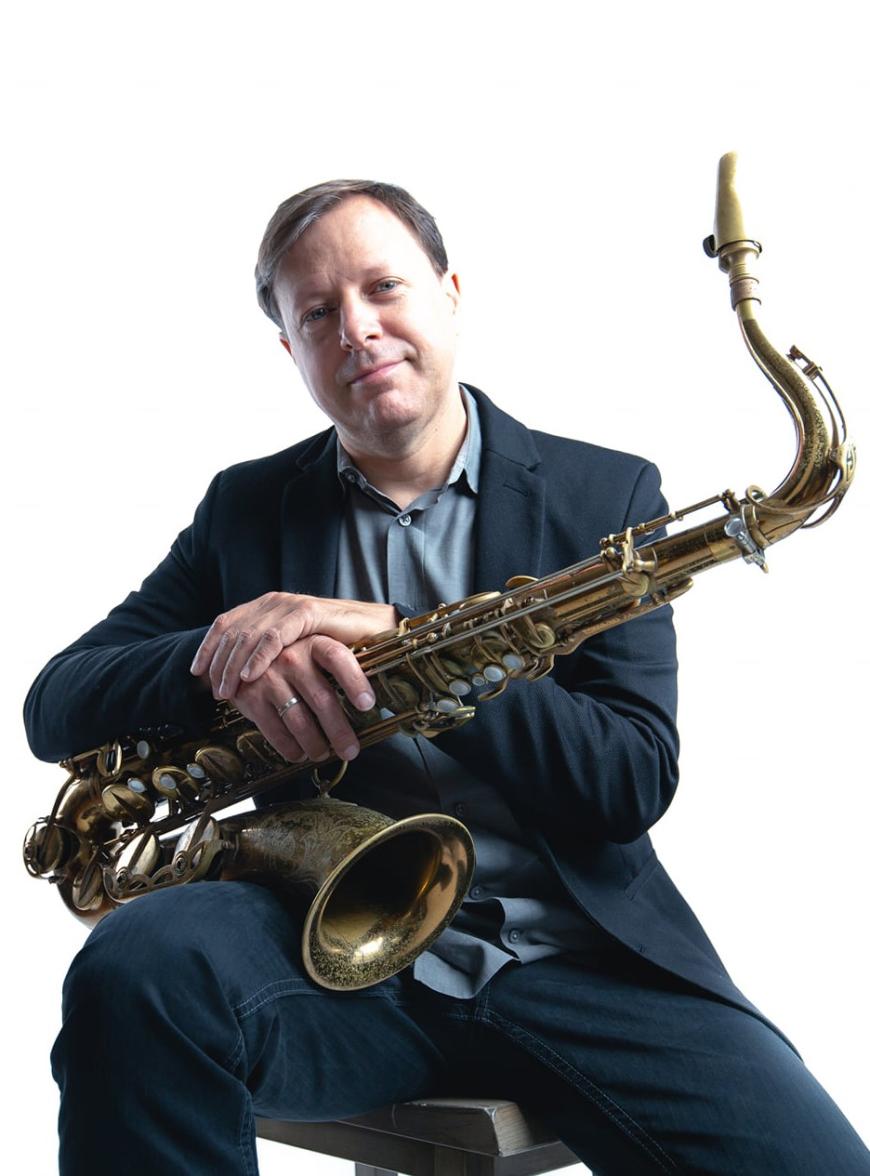
Potter, 51, is one of the most widely esteemed players of his generation, and the connection with SFJAZZ, where he is also one of this season’s five resident artistic directors, has allowed him to spread his wings. He’s in the midst of composing new music for jazz quartet and orchestra that he’ll premiere April 20–23. With the Collective, he’s also thrived as a composer, taking full advantage of resources rarely available in American jazz contexts. He’s been part of a variety of cooperative ensembles, “but this is completely unlike any other band I’ve led or been a member of,” he said. “There’s the unusual situation that SFJAZZ is the entity that makes this possible. We’ve been here for about two weeks already, which really gives you a chance to workshop the music and get inside of it. In most situations you’re lucky to get one rehearsal, and then there’s the gig.”
It's hard to overstate the importance of the rehearsal time. A major reason why Blue Note Records played such an important role documenting new music in the late 1950s and 1960s is that the label budgeted rehearsal time into the ad hoc sessions that weren’t documenting a working band. Bob Porter, the prolific producer who worked for a major rival, once famously observed that “the difference between Blue Note and Prestige is two days’ rehearsal.”
With a front line featuring two tenor saxophones and trumpet (and the vibes pivoting between the horns and the rhythm section), the Collective provides an unusual instrumental palette for arranging. While the ensemble included a trombone chair from its founding, the spot was never filled after the quiet 2019 departure of Robin Eubanks, who held it down for more than a decade. The slimmed-down septet instrumentation “gives it a different character,” Potter said. “It’s a little more nimble. Last year with the vocals, there were so many moving parts. Making sure everyone had enough room felt like a puzzle. This is more loose, like a normal jazz experience.”
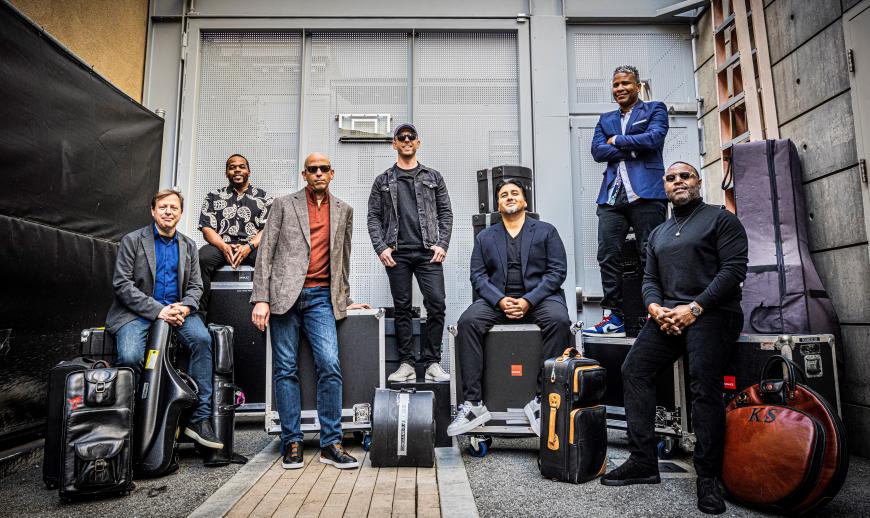
The thematic concept is also much looser. For the first 15 years, Collective members were commissioned to write original tunes and arrange a piece by a designated composer. The thematic seasons started with Ornette Coleman, John Coltrane, and Herbie Hancock. After covering the obvious candidates, the group expanded the focus with seasons exploring the music of Stevie Wonder, Antônio Carlos Jobim, and Michael Jackson. These seasons were no less successful creatively, but playing music by artists with widespread name recognition seems like a concession to commercial imperatives by a band that tours widely, particularly when there are so many fascinating jazz composers who could use some sunshine (like Clifford Jordan, Carla Bley, George Russell, and Bobby Hutcherson, a founding member of the Collective).
At this point it’s not clear if the Collective will return to that kind of a theme. As Potter acknowledges, this year’s frame (“New Standards and Reimagined Classics”) “means anything. A few of us brought in more music than we can possibly use. We’re still hammering out what’s going to go in the set. It’s mostly originals, though I brought in an arrangement of Billie Holiday’s ‘God Bless the Child’ that also incorporates Earth, Wind & Fire’s ‘That’s the Way of the World.’ Warren Wolf brought in ‘Someday We’ll All Be Free,’ a Donny Hathaway tune.”
Meanwhile, the Collective’s impact can sometimes be felt away from the SFJAZZ Center. The great Los Angeles pianist, arranger, and composer Billy Childs played his first post-shutdown gigs two weeks ago at the California Jazz Conservatory, and Kendrick Scott brought poise and fire to the trio.
Edward Simon, the only Collective member who actually lives in the Bay Area, plays a Stanford Live solo recital at Bing Studio on Dec. 2. And one of the most potent experiments to emerge from the Collective laboratory manifests next month when the Joe Lovano and Dave Douglas Quintet presents Sound Prints, a group that emerged out of the 2008 season focusing on the music of Wayne Shorter. The group went on to premiere new music by Shorter at the 2013 Monterey Jazz Festival (released on the Blue Note album Sound Prints), and the former Collective members reunite on Nov. 20 to close Lovano’s four-night SFJAZZ run and also play Kuumbwa Jazz Center Nov. 21.


